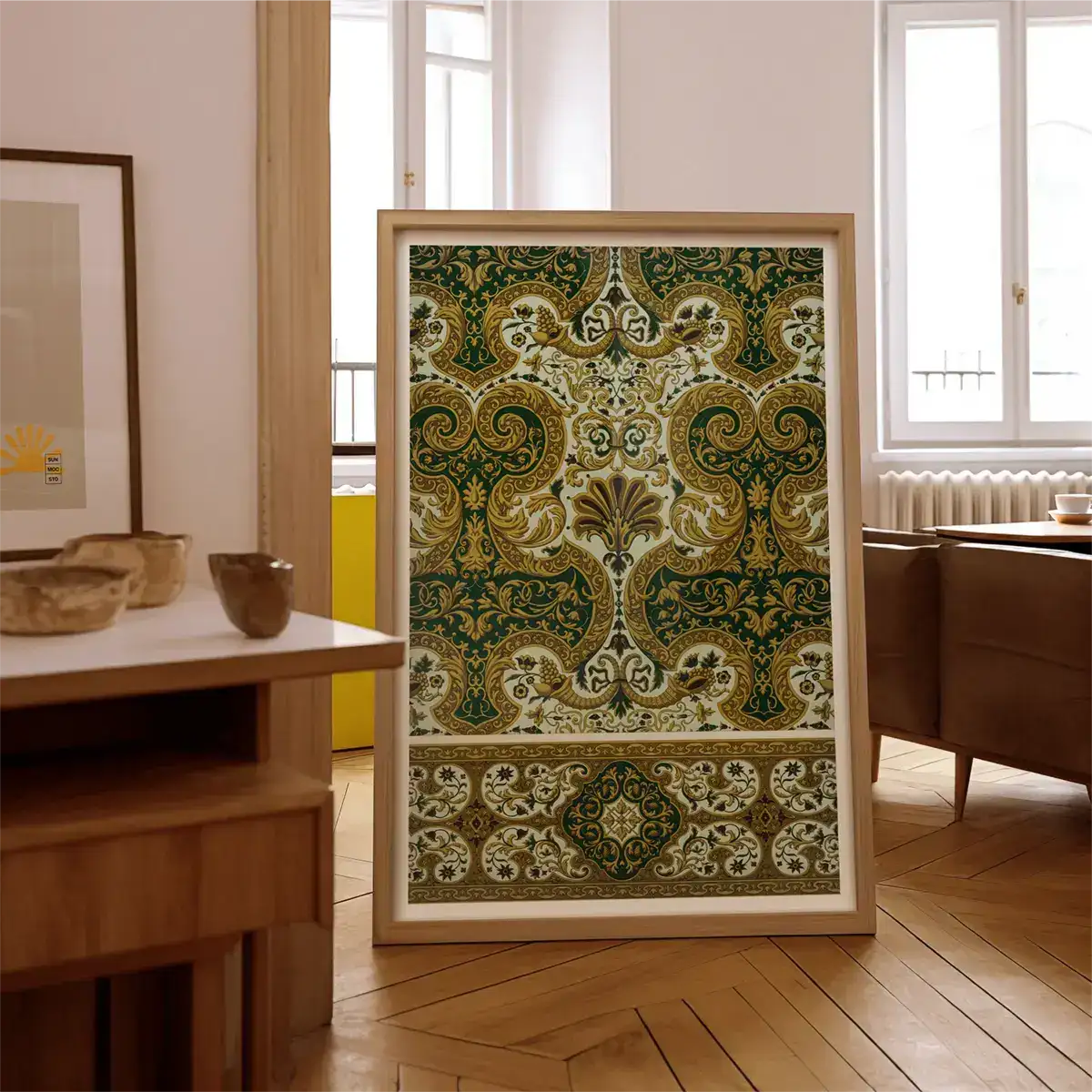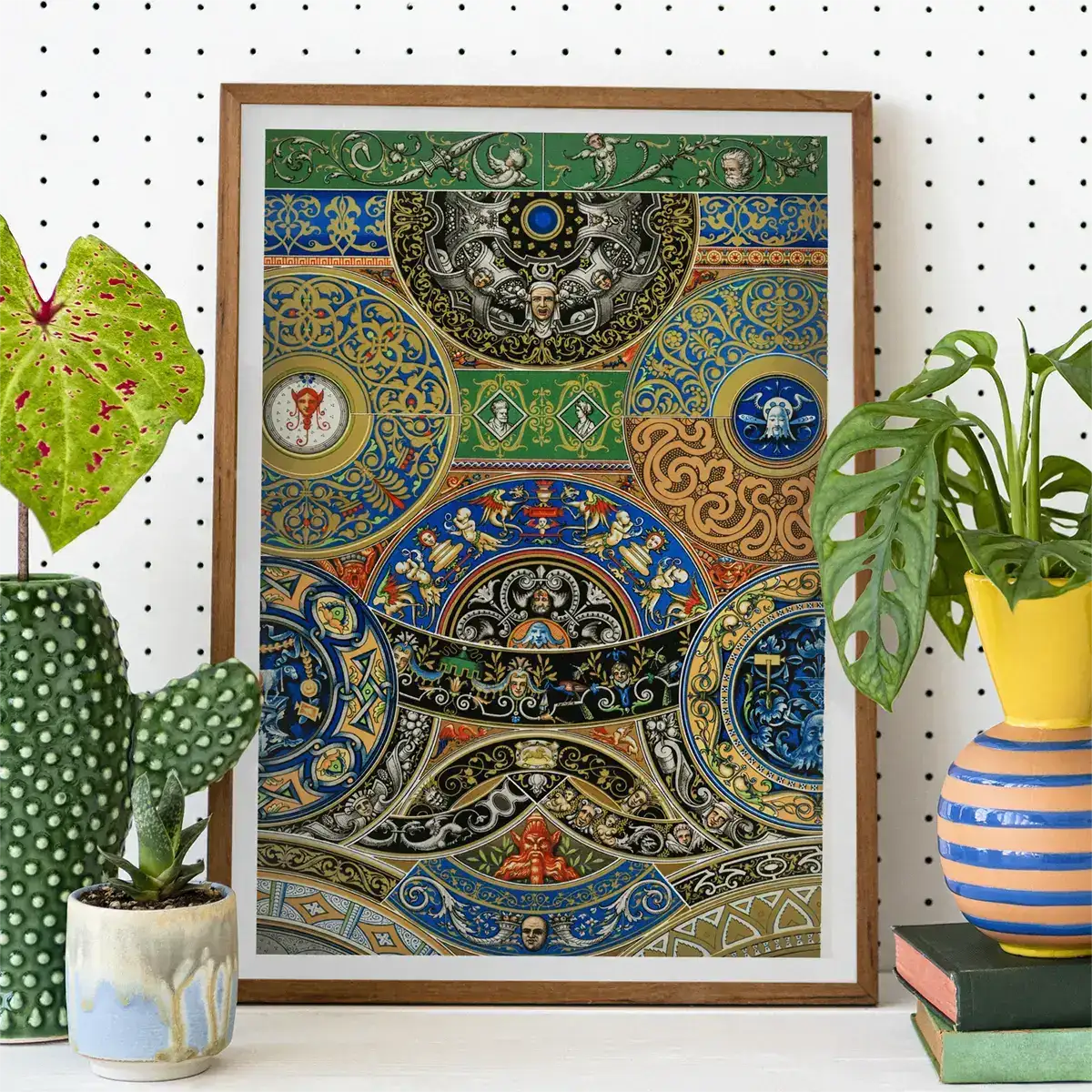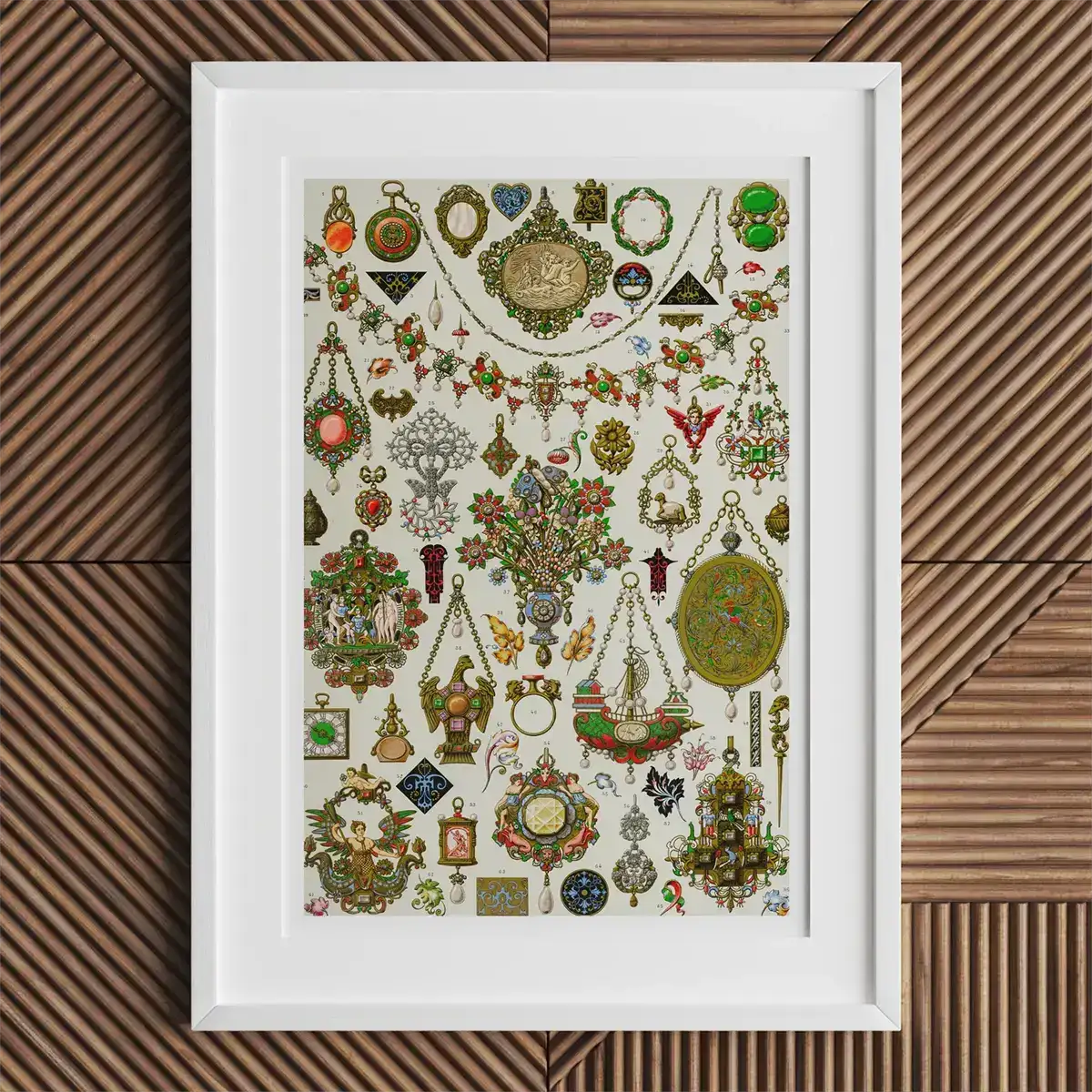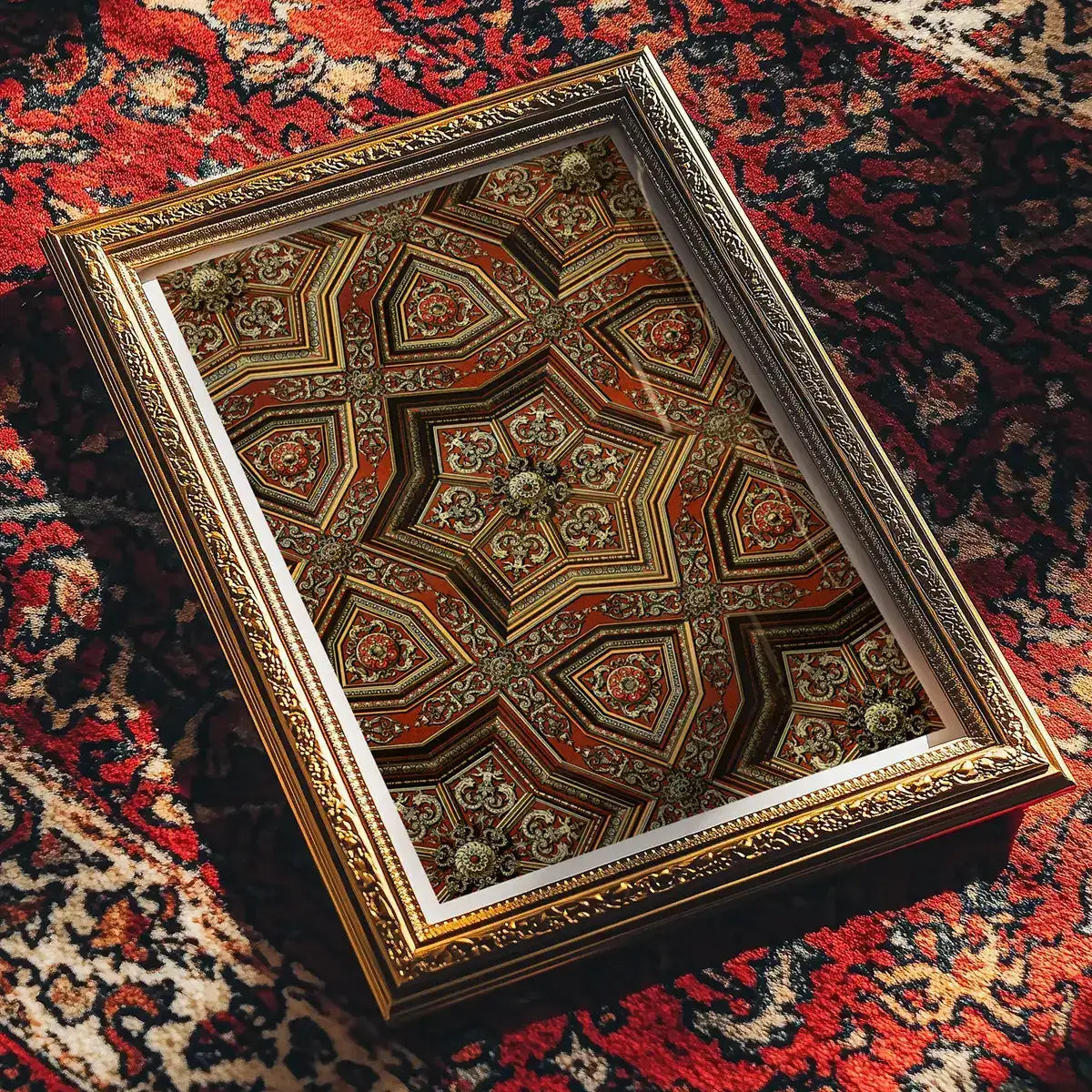Auguste Racinet, a name that resonates with the meticulous artistry of a bygone era. He stands as a luminary in the annals of visual history. More than a mere illustrator, he was a visionary who breathed life into the costumes and ornaments of centuries past, rendering them with a chromatic splendor that continues to captivate and inform.
His seminal works, L'Ornement Polychrome and Le Costume Historique, serve as vibrant portals, inviting us to traverse the landscapes of human creativity and sartorial evolution. These volumes, rich in detail and imbued with an undeniable artistic flair, have cemented Racinet's legacy as a master of historical representation.
Key Takeaways:
- Auguste Racinet was a French artist and costume designer known for his work in the 19th century.
- He is most well-known for his book, "L'Ornement Polychrome," which features beautifully illustrated chromolithographs and has contributed significantly to the preservation of decorative art and French cultural heritage.
- Racinet's expertise in historical costume illustration established him as a prominent figure in the field of art history.
- His legacy continues to inspire and captivate audiences today, particularly in the realms of art, fashion, and cultural heritage.
Early Life and Education

Albert Charles Auguste Racinet entered the world in France in 1825, born into a lineage touched by the artistic spirit. His father's profession as a lithographic printer likely provided young Auguste with an early and intimate understanding of the intricacies of visual reproduction. This exposure to the printing process, particularly the potential for mass dissemination of visual information, would undoubtedly shape his future endeavors.
Growing up within a family that embraced both artistic pursuits and intellectual exploration further nurtured his inherent talents and fostered a deep-seated curiosity about the world around him . This environment, steeped in creative energy and intellectual discourse, provided fertile ground for his burgeoning artistic inclinations and his lifelong fascination with history.
Racinet's formal artistic journey led him to the esteemed École des Beaux-Arts in Paris, a bastion of artistic tradition and innovation. He also honed his skills at the École de dessin in Paris, further solidifying his artistic foundation. The rigorous training he received at these prestigious institutions provided him with a comprehensive understanding of classical techniques and exposed him to the prevailing artistic dialogues of 19th-century Paris.
Initially, Racinet embarked on a career as a painter. This early immersion in the world of painting undoubtedly sharpened his eye for detail, color harmonies, and compositional balance – skills that would later prove invaluable in his intricate illustrative work.
During his time at the École des Beaux-Arts, he dedicated himself to the study of painting, and his works found their way into the annual exhibitions of the Paris Salon between 1849 and 1874. While his enduring fame rests upon his publications, his participation in these prestigious exhibitions indicates his initial engagement with the traditional art establishment and his early exploration of artistic expression.
Even in his early paintings, a recurring theme emerged: an evident interest in the art and life of antiquity. This nascent fascination with historical subjects served as a clear precursor to his later, more profound dedication to documenting the history of costume and ornament.
Impressionism, Romanticism, Symbolism

The 19th century in France was a period of significant artistic ferment, witnessing the rise and evolution of various influential art movements. Romanticism, with its emphasis on emotion and historical themes, Realism's focus on contemporary life, the fleeting impressions captured by Impressionism, and the evocative symbolism of Symbolism all contributed to a rich and dynamic artistic landscape.
Key figures like Eugène Delacroix, known for his dramatic historical and literary scenes, and Jean-Auguste-Dominique Ingres, a champion of Neoclassicism and precise draftsmanship, shaped the artistic sensibilities of the era. While Racinet's meticulous style shared some affinity with Romanticism's interest in historical detail, his approach diverged from the often expressive brushwork characteristic of many Romantic painters.
The century also saw dramatic shifts in French fashion. From the high-waisted, neoclassical styles of the early 1800s to the elaborate crinolines and bustles of the mid-century and the more streamlined silhouettes towards the end, fashion underwent a constant transformation, reflecting social and economic changes. These dynamic changes in contemporary attire likely heightened Racinet's interest in documenting the historical predecessors, providing a visual contrast and highlighting the cyclical nature of fashion trends.
The broader cultural landscape of 19th-century France was marked by a growing emphasis on scientific inquiry and historical documentation, fueled by the philosophical tenets of positivism. This intellectual climate, coupled with significant advancements in printing technology, most notably the development of chromolithography, created an opportune environment for Racinet's ambitious projects aimed at visually preserving and disseminating historical knowledge.
L'Ornement Polychrome: A Masterpiece of Art History

Racinet's L'Ornement Polychrome, a testament to his fascination with decorative arts, was published in two series, the first spanning from 1869 to 1873 and the second from 1885 to 1887.
The initial series comprised one hundred meticulously crafted plates, followed by an expanded second series featuring one hundred and twenty plates. This division into two distinct phases suggests the significant popularity and sustained demand for Racinet's comprehensive documentation of ornament across various historical periods.
The inclusion of 19th-century designs in the second series further demonstrates his commitment to capturing the evolution of decorative styles up to his own time. The scope of L'Ornement Polychrome was remarkably broad, encompassing a diverse range of mediums from cultures around the globe, including intricate woodwork, detailed metalwork, architectural motifs, textile patterns, painted decorations, and ceramic designs.
His expansive approach underscores Racinet's aspiration to create a comprehensive visual encyclopedia of ornament, reflecting a prevalent 19th-century interest in exploring and comparing the artistic traditions of different cultures.
On Chromolithography
A pivotal element in the visual impact and enduring value of L'Ornement Polychrome was Racinet's masterful utilization of chromolithography. This innovative color printing process, which involved using multiple lithographic stones to layer colors, allowed for the creation of richly detailed and vibrant illustrations.
Racinet recognized the immense potential of this technique to faithfully reproduce the intricate details and nuanced color palettes of historical ornaments, surpassing the limitations of earlier monochrome or less sophisticated color printing methods.
His enthusiasm for the process is evident in the exquisite quality of the plates, which brought historical designs to life with unprecedented accuracy and visual appeal. L'Ornement Polychrome quickly became an indispensable resource for a wide audience, including historians seeking accurate visual references, artists looking for inspiration from past styles, and designers aiming to incorporate historical motifs into their contemporary creations.
The influence of this publication can still be observed in modern-day fashion designs and trends, demonstrating its lasting impact on the field of decorative arts and its ability to bridge historical aesthetics with contemporary creative practices.
Le Costume Historique

Racinet's other monumental work, Le Costume Historique, originally appeared in France between 1876 and 1888. This comprehensive study was published in six volumes and offered an unprecedentedly broad survey of the history of costume, dress, and style from antiquity to the close of the 19th century.
The sheer scale of Le Costume Historique, encompassing six substantial volumes and a vast array of cultures across millennia, underscores Racinet's extraordinary dedication to meticulously documenting the evolution of human attire. The publication featured over five hundred plates, many rendered in vibrant color, illustrating the clothing of diverse cultures throughout history.
Racinet's illustrations within Le Costume Historique were celebrated for their remarkable historical accuracy. His keen eye for detail and his extensive knowledge of costume history allowed him to create vivid and informative depictions of historical garments. However, driven by a desire to produce a visually appealing work, Racinet occasionally introduced color to sources that were originally monochrome.
Racinet's monochrome practice, while enhancing the visual impact of the illustrations, raises questions about the strict adherence to historical authenticity in every instance. Nevertheless, Le Costume Historique has remained an invaluable reference for a diverse range of users, including students of fashion history, costume designers for theater and film, visual artists seeking historical inspiration, and historians aiming to understand the material culture of the past.
Its enduring relevance and continued use highlight the lasting significance of Racinet's meticulous research and artistic skill for both scholarly pursuits and creative endeavors.
The Legacy of Auguste Racinet

Beyond his remarkable achievements as an illustrator, Auguste Racinet was a respected costume historian and scholar. His deep understanding of historical fashion and costume design earned him recognition as a leading authority in the field.
Racinet was also a prolific writer, complementing his visual work with insightful textual descriptions and commentary. His contributions extended to the practical realm of costume design, as he lent his expertise to various theatrical productions. This hands-on experience likely provided him with a nuanced understanding of how historical garments were constructed, worn, and moved in, further enriching the authenticity of his illustrations.
Racinet's dedication to documenting the intricacies of French costume history, particularly in L'Ornement Polychrome, played a significant role in preserving aspects of France's rich cultural heritage. His focus on the minute details and evolving styles of French attire provided a valuable visual record at a time when systematic documentation of such material was less common.
Racinet's commitment to visual documentation and scholarly pursuits is evident in his early involvement in illustrating various scientific works, beginning in the 1840s with his father. He contributed to projects such as Histoire du costume et de l'ameublement au Moyen Âge and Les Arts somptuaires, demonstrating a consistent dedication to historical subjects and visual representation throughout his career.
His later role as an engraver and artistic director at the publishing house Firmin-Didot et Cie provided him with the platform and resources necessary to bring his major publications, L'Ornement Polychrome and Le Costume Historique, to fruition.
Racinet's meticulous depictions of fashion serve as more than just historical records; they function as visual metaphors for the societies they represent. Clothing, in its myriad forms, reflects social hierarchies, cultural values, and the defining characteristics of specific historical periods.
Through his detailed illustrations, Racinet provides a visual language that allows us to interpret the complexities of past societies by examining the garments they adorned themselves with. Similarly, the intricate ornaments documented in L'Ornement Polychrome transcend their purely decorative function, acting as potent symbols of cultural identity, religious beliefs, and the prevailing artistic sensibilities of different eras.
These visual motifs offer insights into the artistic and spiritual underpinnings of diverse cultures. Despite their creation in the 19th century, Racinet's works continue to resonate with contemporary audiences, underscoring the enduring nature of art and the cyclical patterns often observed in fashion.
His books serve as a temporal bridge, enabling modern viewers to connect with the past through the visual vocabulary of costume and ornament, highlighting the timeless power of art to transcend the boundaries of time.
Reading List
- "Albert Racinet's L'Ornement Polychrome (1869–73)." The Public Domain Review. Accessed May 15, 2024. https://publicdomainreview.org/collection/albert-racinet-s-l-ornement-polychrome-1869-73/.
- "Auguste Racinet." Artvee. Accessed May 15, 2024. https://artvee.com/artist/auguste-racinet/.
- "Auguste Racinet: The Costume History." Thames & Hudson Australia. Accessed May 15, 2024. https://thamesandhudson.com.au/product/auguste-racinet-the-costume-history/.
- "Auguste Racinet (1825-1893), Le Costume Historique. 1888." Christie's. Accessed May 15, 2024. https://www.christies.com/en/lot/lot-6297042.
- "Costume Historique: Introduction." University of Louisville Libraries. Accessed May 15, 2024. https://library.louisville.edu/art/exhibits/costume-historique.
- "L'Ornement Polychrome." The Metropolitan Museum of Art. Accessed May 15, 2024. https://www.metmuseum.org/art/collection/search/355873.
- "RACINET, Auguste." Dictionnaire critique des historiens de l'art actifs en France de la Révolution à la Première Guerre mondiale. Accessed May 15, 2024. https://www.inha.fr/dictionnaire-critique-des-historiens-de-lart-actifs-en-france-de-la-revolution-a-la-premiere-guerre-mondiale/racinet-auguste-inha/.
- "Racinet, Auguste." LibraryThing. Accessed May 15, 2024. https://www.librarything.com/author/racinetauguste.
- "Racinet's Encyclopedic Costume History." Mashable. Accessed May 15, 2024. https://mashable.com/feature/racinets-costume-history.
- Tétart-Vittu, Françoise. The Costume History: 1852-1893. Taschen, 2015.















